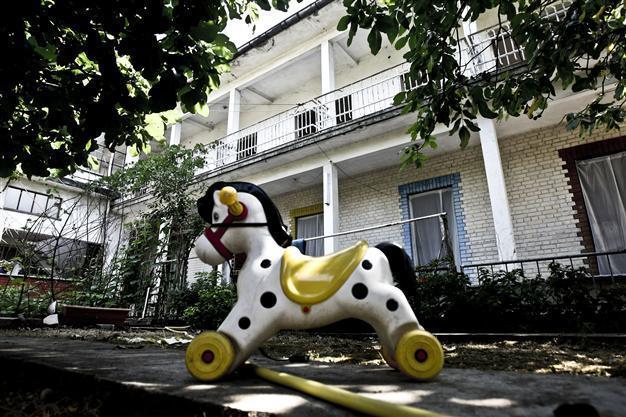Kamp Armen donated to Armenians, demolition plan shelved
Aziz Özen - ISTANBUL

AFP Photo
Delighted Armenians have celebrated victory after a controversial demolition plan for Kamp Armen was shelved, as the land owner of the building donated it to an Armenian foundation.Kamp Armen, an Armenian orphanage in the Tuzla district of Istanbul where slain journalist Hrant Dink and thousands of Armenian orphans had grown up, will be donated to the Gedikpaşa Armenian Protestant Church and School Foundation by Fatih Ulusoy, the camp’s land owner, Alexis Kalk, a spokesman from Nor Zartonk, a non-governmental Armenian initiative, announced on May 24.
Kalk said activists from Nor Zartonk and the Kamp Armen Solidarity Movement had been staging a sit-in for 19 days to stop the demolition of the building, demanding the return of the orphanage to its real owners.
“We will follow up the ownership transition process and our campaign will continue until the formal work is completed,” Kalk said.
Efforts to demolish Kamp Armen began May 6 and received widespread attention once the news broke out on social media. Later in the day, the demolition was stopped when many people, including activists and leading figures from the Armenian community, rushed to the area to protest the demolition work.
The protesters, who had been holding vigil for 19 days to stop the demolition of the camp’s building along with Armenian community members, welcomed the decision, celebrating the good news by hugging each other.
Activists as well as Armenian orphans who had grown up in the camp voiced their wishes that the camp will again serve orphans who “will bring joy to the camp.”
Garabet Orunöz, 55, who had stayed at the orphanage for eight years between 1967 and 1975, said words were not enough to express the meaning of Camp Armen for the Armenians who had stayed there in their childhood.
“Kamp Armen was built after 1915 to shelter Armenian orphans as well as sustain their identity, culture and language since there was no available school for Armenian children in Anatolia at the time. Thousands of children who grew up here had been taught their identity and more importantly their past. This place is a center of memory,” said Orunöz.
He also said they plan to renovate the decrepit building and use it as an orphanage for around 150 Armenian children so it can serve its original purpose.
“We plan to host around 50 children as permanent residents of the orphanage. We will have a space for about 100 children. We wish to use that capacity to shelter children in need from across Turkey. We will also get help from sociologists, psychologists and pedagogues to make it easy for these children to get to know each other so that the children will learn their language, culture and ethnic background,” he added.
Camp Armen was built in 1962 by the Gedikpaşa Armenian Protestant Church, as the former building was no longer able to host the innumerable Armenian orphans arriving from various parts of Anatolia. Among the children who had grown up in the orphanage were Hrant Dink, a Turkish-Armenian journalist murdered in 2007, his wife Rakel Dink and Peoples’ Democratic Party (HDP) deputy Erol Dora.
The Turkish state expropriated the camp in 1987, following the 1980 military coup, based on a 1936 bill preventing minority foundations from acquiring property.
Although the Turkish government signed a historic decree in 2011 to return property taken away from minority foundations, the camp was left out, alongside hundreds of other properties.
















